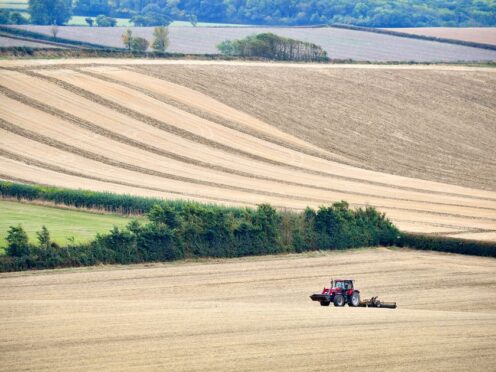Human health is being exposed to “unacceptable risks” by harmful substances spread over farmland, the High Court has heard.
Campaign group Fighting Dirty is taking legal action against the Environment Agency (EA), claiming it unlawfully removed a timescale to implement its “sludge strategy” last year, which would change how the material was used on agricultural land.
Fighting Dirty claims that sludge “is a by-product of treating wastewater in water or sewage treatment plans”, which can contain microplastics filtered out of sewage water to prevent polluting substances from reaching waterways.
At a hearing on Tuesday, barristers for the group claimed that the EA’s decision to remove and not replace the timescale for implementing the strategy maintained an “unacceptable status quo” which posed “unacceptable risks to the environment/human health”.
The EA is opposing the claim. The Department for Environment, Food and Rural Affairs (Defra) is an interested party in the case and also opposes the bid.
In written submissions, David Wolfe KC, for Fighting Dirty, said: “The EA and the Secretary of State are, for all intents and purposes, maintaining the unacceptable status quo.
“The claimant, a group established to challenge policies which allow pollution to enter the natural environment, are profoundly concerned that ‘in reverting, in effect, to the do-nothing option’, the EA is failing to address the acknowledged environmental harms caused by the widespread spreading of sludge to farmland under the current regime.”
The court in London was told that around 96% of sludge produced in the UK – around 3.5 million tonnes – was spread as fertiliser across agricultural land every year.
But a 2017 report commissioned by the EA said that sludge contained dangerous contaminants, including dioxins and hydrocarbons which could harm crops and human health.
Mr Wolfe said that following the report, the EA announced its intention to change rules around how sludge was treated as it accepted that existing regulations were “outdated and inadequate”.
But he claimed that by removing and failing to replace the 2023 target date to implement the strategy, the EA and Defra had “shifted from a position of agreed urgency to agreed inaction” over the issue.
Mark Westmoreland Smith KC, for the EA, said that progress on implementing the strategy “had been slower than either (the EA) or the Defra had hoped” due to issues such as the Covid pandemic, but that the strategy remained the same.
He added that the date was “not a commitment but an aspiration” and that removing it “simply reflected the passing of the aspirational date”.
He said: “In such circumstances and where the required legislative process is not in the EA’s control, it was plainly rational not to replace the date.”
He continued: “The fact that progress has been slower than (Fighting Dirty) wants does not amount to a legal error.
“The reality is that government is complex and there are competing priorities on resources.
“It is not for (Fighting Dirty) or the courts to seek to allocate those resources and/or dictate how or when policy or proposed legislation is to be propagated.”
Ned Westaway, for Defra, said in written submissions that the strategy was “solely an EA document” and that the department “never endorsed the strategy”.
But he said that the strategy merely set out an “ambition as to timing for a plan to work”, which was “necessarily subject to circumstances”.
He said: “It is not unusual for statements of policy intention not to set out when it is intended or expected that they will be developed or delivered, for the obvious reason that wider economic and political circumstances make it difficult or impossible to be clear about such timescales.
“It was obviously not irrational of the EA to revert to that position in amending the strategy.
“That does not mean that discussions over progressing the strategy, and related policy development, do not continue. They do.”
Mr Justice Fordham will give his judgment in writing at a later date.
